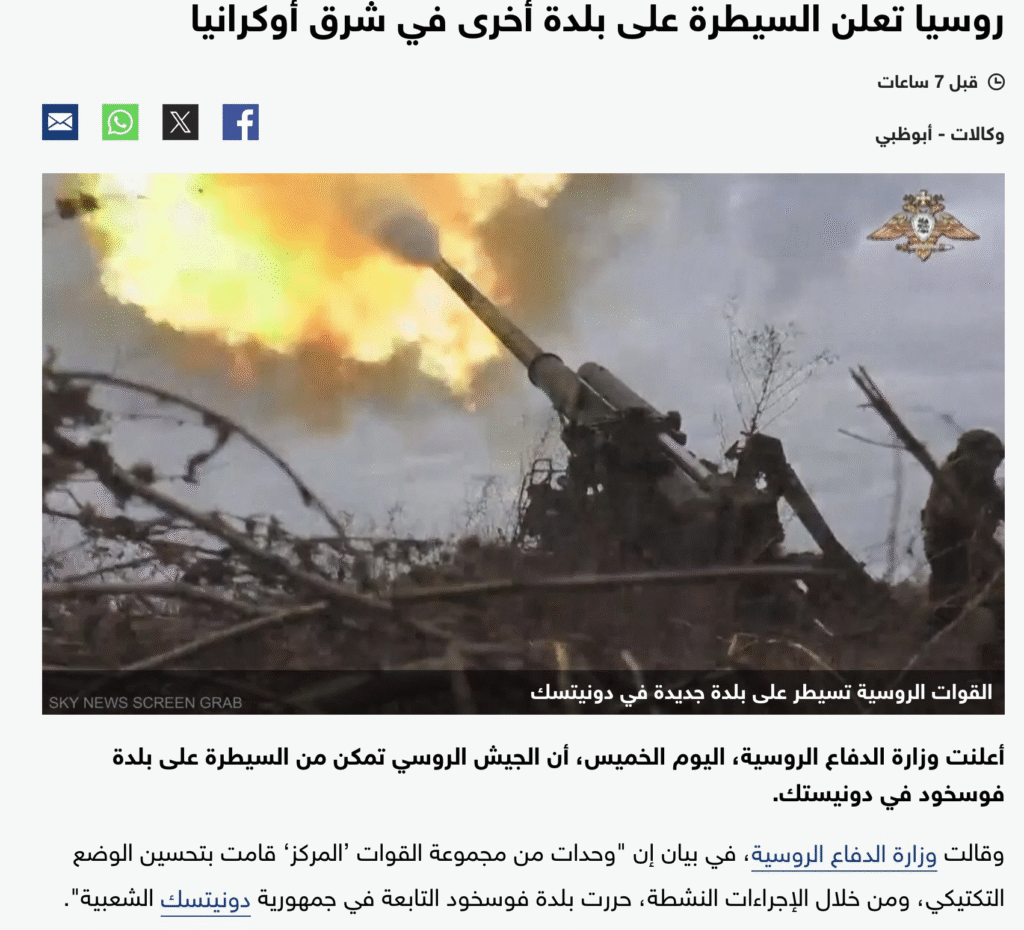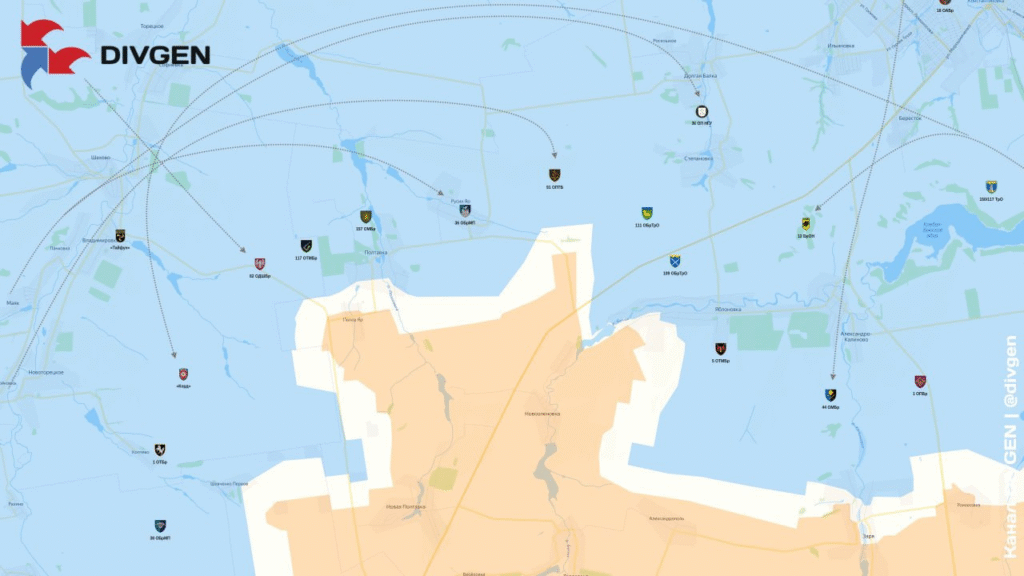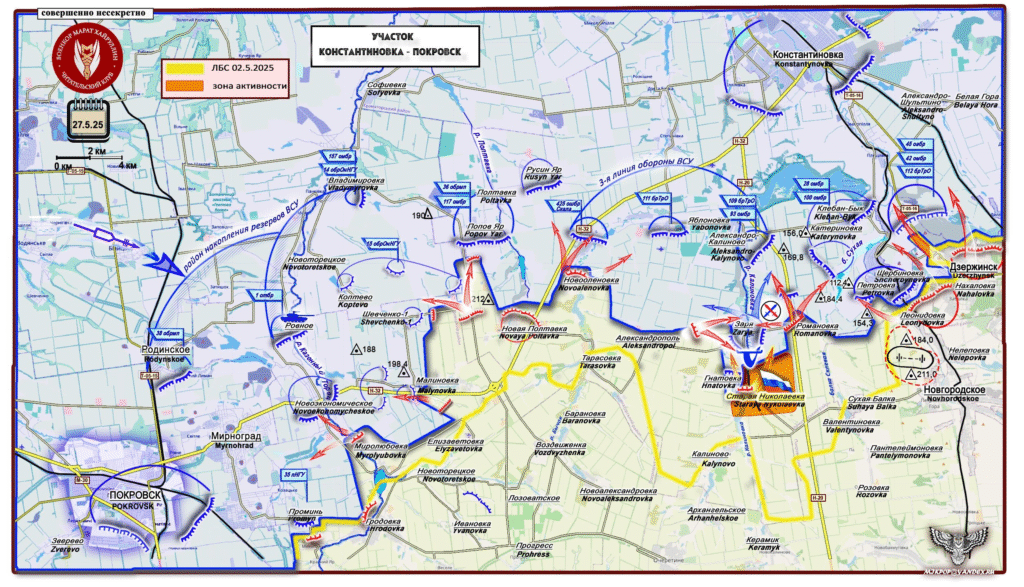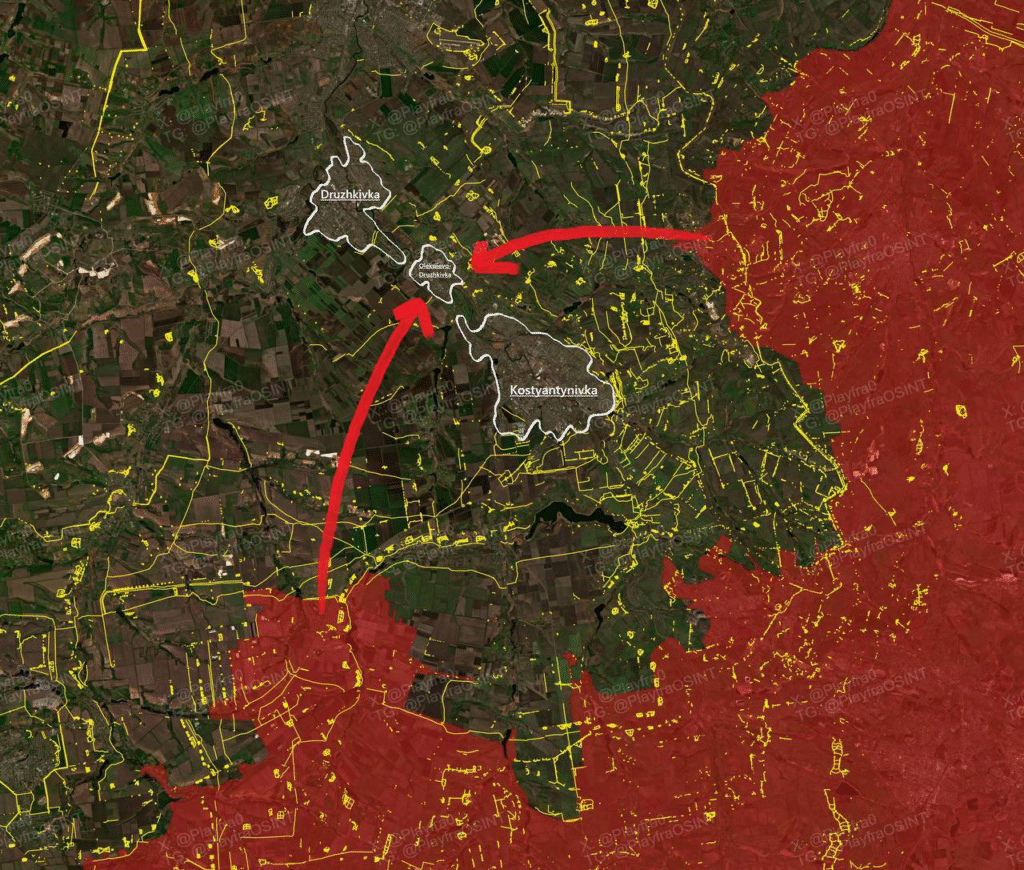Over the past few weeks and days, the battle for Kostiantynivka has begun to rage with both sides seeking to upset the other in a bid for control over the village. While certainly not as important ass Pokrovsk with its deposits of raw materials for Ukraine’s economy, Kostiantynivka gains its importance from its position relative to other villages in the Donbas.
At the other end of the south eastern Donetsk agglomeration about the T05-24 road with Pokrovsk (Krasnoarmeysk), Kostiantynivka is a strategic logistics hub for both the southwestern village of Pokrovsk but also for the northern agglomeration of Ukrainian villages just opposite to the north west of Chasiv Yar. This northwestern agglomeration covers a wide ambit of villages important for Russia’s full annexation of the northern Donbas’s underbelly, primarily in Kramatorsk and Slavyansk. Also important is its position on the T05-24 road. Control over the village secures Pokrovsk’s right flank.

The village is less hard fought than any of the previous villages Russia is currently exploiting for its continued advance to Dnipropetrovsk. In terms of battle weariness, Bakhmut is far more significant than the secondary battles that raged during its duration. Bakhmut, for instance, witnessed the decimation of the Ukrainian armies that successfully displaced the Russians from Kyiv in the immediate aftermath of Russia’s full-scale invasion of Ukraine The other villages like Avdiivka and Vuhledar, both hard-fought lynchpins of Ukrainian defense, and described as citadels, are secondary in terms of Russia’s initial breakthroughs. The battles for Toretsk and Chasiv Yar come after these two in importance, length of duration, and their effect on the sustainability of Ukraine’s effort to reconstitute its forces continuously against the destructive losses of its defensive strategy. The battles for these heavily fortified villages have lasted almost the entire duration of the war and have been subject to the full range of developments in electronic, drone, and armored warfare. Kostiantynivka, however, is different. It is the first, non-hard-fought village to witness a sustained onslaught after the fall of villages in major battles from 2022, 2023, and 2024 respectively. It is fresh territory on a bloodless battlefield. Kostiantynivka is thus significant for its novelty.
The battle for Kostiantynivka represents the beginning of the lattermost end of the overall battle for the Donbas in toto. Whereas the previous battles merely led up to this point, the battle for Kostiantynivka is not merely a matter of ‘position’ for higher ground or access, control, or exploitation over an important roadway, highway, or line of communication. It is the beginning of the end of Ukraine’s network of defense and fortification for the Donbas.

It also signifies the beginning of the end for Ukraine’s effort to reconstitute continuously. Whereas major military historians claim Russia reconstituted its army no more than four times during World War II, Ukraine has reconstituted its forces more than seven times. Brigades like the Azov brigade, for instance, have passed through multiple phases of reconstitution, which have not only changed the composition of its soldiery but its commanders and command structure. Brigades like the 47th Mechanized brigade, equipped with Abrams M1 tanks, suffered so badly during the approach to Pokrovsk that no only did its lose more than half of its body of tanks; the entire brigade received an order to withdraw completely after bloody losses in Bryansk. These brigades are but a few of the Ukrainian brigades the Russians have rendered combat ineffective in its continuous decimation of Ukrainian armies.

It is often the case that some two to three months before the full and expected decimation of its most recently reconstituted army that Ukraine’s prime minister, Zelensky, a comedy capable of playing the piano with his pants down, raises a call for the recruitment age to be lowered. Initially the recruitment age was high. Now the Ukrainians are edging closer and closer to 18 years of age. This is the lower threshold for Ukraine’s ability to utilize “Eastern European manpower” with “NATO technology” to prevent body bags from piling up in Europe where no single European member of the alliance has a positive fertility rate. It is on the eve of Ukraine’s lower threshold for lowering the recruitment age that the battle for Kostiantynivka rages.

In terms of tactics, Russia’s nomination of Army Group Center’s commander, Mordvichev, to the position of Commander-in-Chief of the Russian Ground Force confirms Russia’s identification of encirclement belief in its continued success. It is the primary mode of advance for Army Group Center and its approach to Pokrovsk. Russia is thus continuing this tactic with Kostiantynivka.
Russia is attacking from two of the tertiary battlefields, Chasiv Yar and Toretsk (the hard fought villages that fell in 2025 as opposed to the ones that fell in 2024 like Avdiivka and Vuhledar). The third village is from the west. It is Новая Полтавка, a village the Russians fell only days ago. Within the Toretsk direction itself, the Russian attack is proceeding from three different directions simultaneously. “Russische Einheiten,” Zeit writes, “griffen demnach östlich der Stadt nahe dem Dorf Druschba, westlich bei den Dörfern Sorja und Romaniwka sowie im Nordwesten in Richtung der Gemeinden Nelipiwka und Stepaniwka an.”

It is most likely that within the next few days, Russia, whose history of warfare on the Ostflanke favors water, is planning to focus the majority of its fighting forces on securing the body of water subtended by Oleksandro-Kalynove and Katerynivka. It is consequently the hardest for the Ukrainians defend, since the Ukrainians are hardly capable of defending against Russian advances on the body of water’s flanks in Rusyn Yar and Stepanivka and Pleshchiivka and Dyliivka respectively. Alternatively, the Russians might proceed on its flanks just as well.
Russia’s decision to attack from three battle hardened villages at once reflects cognitive resonance. Russia is attack at the end of the Dnipro in the south. Russia is attack from Sumy in the north. Russia is attacking in the Donbas in the east. These larger attacks mirror the smaller attacks, sublimating Russia’s overall control on the battlefield from attacks on villages to the overarching attack on Kyiv.

The Ukrainians, who are only just beginning to wake up to Russia’s overarching strategy in the Donbas, have rushed into the village waves of reinforcements in much the same way as it had done in the past, on an emergency basis, with crack brigades, and no clear idea about how to slow, stop, or roll the Russians back. It happened in the Avdiivka direction at Bryansk. It happened in the Chasiv Yar direction with near insurrection. It has happened time and time again.

It is less likely that the battle for Kostiantynivka lasts longer than the primary, secondary or tertiary battles in the Donbas for the simple reason that Ukraine’s situation is far worse now than at any previous time during the war. The new administration in the United States under Donald Trump is less favorable to Zelensky than Biden, at least as far as the surface level politics of America’s Hollywood sideshows is concerned. Ukraine’s effort to reconstitute continuously with the formation of new brigades, such as the 17th, 18th, or 19th, all named after the three legions Rome lost at the Varus disaster in The Battle of the Teutoburg Forest, is far less conducive to the sustainment of its losses than during the primary, secondary, or tertiary battles for the Donbas. Ukraine’s search for “Eastern European manpower” for the reconstitution of its eighth army is already underway, yet its fate is already sealed for decimation in Dnipropetrovsk six months from now, as none of the previous armies lasted long. It takes no more than 50 kilometers or roughly six to nine months for a Ukrainian army to hit the ground.
At any given time on the battlefield, the Russians aim the tip of their drone striking spear 25 to 50 kilometers beyond the receding frontline, softening up Ukraine’s rear for an upcoming offensive. In fact, Russians are already clearing the way forward to Dnipropetrovsk. In at least one clip pro-Russian military bloggers uploaded to the internet, an VT-40 FPV drone in the Dnipropetrovsk region strikes a Polish self-propelled howitzer AHS Krab, a 155 mm NATO-compatible self-propelled tracked gun-howitzer designed in Poland by Huta Stalowa Wola (HSW) by combining a modified South Korean K9 Thunder chassis with a British BAE Systems AS-90M Braveheart turret. In a subsequent clip, a strike with KVN drones results in the destruction of the AHS Krab’s ammo stockpile.
